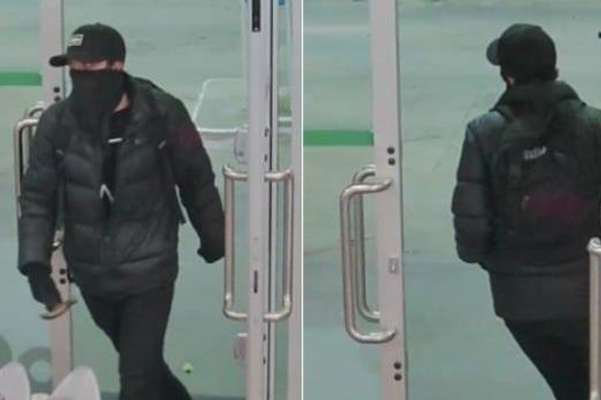Published on the 28/08/2018 | Written by Pat Pilcher

Facial recognition opens an ethical dilemma…
As dairy owners and gas station attendants retreat behind barricaded checkouts, ever smarter cameras are being installed in the hopes that the technology can help their plight.
They are not alone – there are thousands of surveillance cameras constantly watching over our streets and shops. What used to be a costly tool for banks, retailers and corporates has been transformed by low-cost image sensors and wireless IP connectivity.
Now new AI-optimised chips are allowing cameras to make sense of what they see. Even cheap consumer grade wireless cameras can match faces to names. More advanced commercial equipment can combine facial recognition with noise, interpret your actions and what you’re holding, or if you’re hanging around the same spot for longer than is considered desirable.
Their value is usually proven after the crime has been committed, arming police with evidence to track offenders. But, thanks to 9/11, mass surveillance capabilities are being used in high alert crowd gatherings, and the resulting data has authorities grappling with what to do with the information collected.
Like a lot of other AI equipped gadgetry, smart connected cameras offer conveniences that make them an easy sell for both businesses and consumers. Simple tasks such as facial recognition could deliver a phone notification to inform you that there is an unidentified intruder at your home for example.
Marketers are also exploring how smart cameras can be used to gather marketing data to help optimise campaigns and store layouts. At recent technology showcases, both Fujitsu and Microsoft demonstrated cameras that can recognise gender, age and, most critically, sentiment.
As data is collected over time, analytics can be applied to gather otherwise unobtainable insights that can replace art with science in marketing campaigns. While many retailers have little idea how customers perceive them, data from multiple smart connected cameras could, in theory, be used to provide a ‘heat map’ of store areas where customer sentiment is positive (or negative).
Qualcomm has already developed silicon that can detect when customers are holding objects without having to send data to a remote server. Another US start-up, Pilot.ai, has developed tech that can log how long people (who can be split by gender and age) spend in various parts of a store. While they say their technology won’t identify individual shoppers, other start-ups are already offering this capability.
Horizon Robotics developed a smart connected camera that can detect when a specific shopper enters a store. For retailers keen to keep known shoplifters out while quickly identifying VIP customers, the technology could be a game changer.
There is, however, the thorny issues of personal privacy and data ethics to navigate. While most consumers believe that security cameras are a necessary evil only ever used when there is an incident, the technology is creating an ethical dilemma balancing the fact that most consumers will object strongly to being identified, but may not realise that facial data is being used for advertising purposes without their permission.
With smart cameras becoming widely used in private and public security operations, accuracy takes on a whole new level of importance. In the UK, reports surfaced last year that the metropolitan police use of cameras and facial recognition at the 2017 Notting Hill Carnival falsely reported 102 carnival attendees as persons of interest to the police.
Smart connected cameras are already big business in China. Beijing-based SenseTime, China’s largest artificial intelligence company has long been a proponent of smart connected cameras. Surveillance makes up the bulk of their business, much of it with local governments throughout China. They also do a considerable amount of business with China’s largest security firms. Off the back of this, SenseTime has become China’s largest unicorn (with a market valuation of over NZ$4.48 billion).
Companies like SenseTime are riding an AI wave driven by China’s ‘Sharp Eyes’ program. Sharp Eyes is a plan to integrate the 170 million cameras located throughout China into a single giant nationwide surveillance and data-sharing network. AI connected cameras are already being used extensively as part of China’s ‘Smart City’ program. The use of facial recognition and will “help cities run more efficiently”, Chinese authorities says.
As grim as an always-on, all-knowing surveillance network sounds, connected AI camera networks have limitations. While stories such as authorities arresting a wanted man out of a crowd of 60,000 concertgoers made global headlines, the reality is mass facial recognition is a challenge.
The sheer volume of data generated has so far out-scaled attempts to automate facial recognition smoothly. At the moment, most cameras are only able to search no more than 1,000 faces at any single point in time. According to Xie Yinan, VP of Chinese AI company Megvii (another provider of facial recognition tech used by Chinese police), the data and processing power required for an operation more extensive than that would need a supercomputer. That, no doubt, will be a problem solved over time.
Ultimately, the benefits of smart cameras might override the concerns if criminals or terrorists can be caught and crimes prevented.
But they will also need to overcome a low tech problem.
The hoodie, cap and face cover which are de rigueur for any hardened crim.



























